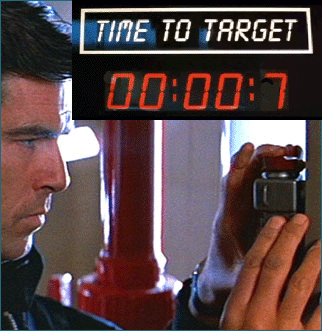[
Editor's Note: This is the final story in a series of articles
providing the public with a behind-the-scenes look at how tax policy can drive
decision-making for large, publicly traded corporations.]
A month after they were scheduled to start filming, the producers of the
upcoming James Bond film got an e-mail from studio executives with what must
have been a frustrating directive: the script needed rewriting.
The bosses at Sony Pictures Entertainment and Metro-Goldwyn-Mayer Studios
Inc. (MGM) weren't looking to avoid an R rating or ensure that Spectre
could get past foreign censorship boards.
And although the director had repeatedly agreed "under duress" to
bring in new writers to address "logic issues" and an "unsatisfying"
third act, the studio bosses didn't even want more changes to the underlying
storyline.
They just wanted tax cuts.
"We are currently facing a budget that is far beyond what we
anticipated and are under immense pressure to reduce the number to $250M net
of rebates and incentives," wrote Jonathan Glickman, president of MGM's
motion picture group. "This is not about 'nickel and diming' the
production. As of now, our shooting period is $50M higher than Skyfall
and the current gross budget sits in the mid $300Ms, making this one of the
most expensive films ever made."
Glickman's e-mail went on to suggest changes to the film's content and
shooting schedule that he hoped could bring down the bottom line.
That e-mail  was among the many internal Sony documents hacked and leaked by an
organization the FBI says is affiliated with the North Korean government. The
records have provided the public with a unique inside look at how studios seek
to use their clout to influence the terms of government subsidies for their
work.
was among the many internal Sony documents hacked and leaked by an
organization the FBI says is affiliated with the North Korean government. The
records have provided the public with a unique inside look at how studios seek
to use their clout to influence the terms of government subsidies for their
work.
$14 Million in Incentives for 4 Minutes of Footage
In the case of
Spectre, the e-mails suggest that the film's lavish
budget put the studio, which did not respond to Tax Analysts' request for
comment, in a position in which it was so desperate to save money that it
allowed itself to cede some level of creative control to foreign bureaucrats.
Many of the changes recommended in Glickman's e-mail focused on
cutting costs by reducing the number of crews being used, relocating some work
to less expensive locales, and abandoning plans to shoot using an
ultra-high-definition resolution.
But before all that, Glickman started with proposals to increase the
project's eligibility for film incentives, beginning with a request to
highlight the skyline and other "modern" features of their first
shooting location -- Mexico City.
Glickman also asked the Bond team to consider moving other scenes to
London, where the film is likely pursuing the United Kingdom's recently
expanded and extended film credits.
All these changes came just a month after executives were circulating a
memo  titled "Considerations for Cuts," which balanced suggestions for
moving some production out of Mexico with the criteria for maintaining the
incentives, many of which governed the content -- rather than the production
-- of the film.
titled "Considerations for Cuts," which balanced suggestions for
moving some production out of Mexico with the criteria for maintaining the
incentives, many of which governed the content -- rather than the production
-- of the film.
Under the heading "Elements needed to preserve Mexican deal," the
memo lists criteria suggesting that although Mexican officials wanted to see
their citizens in the film, they were sensitive about how they might be
portrayed.
To fill the role of Estrella, a woman whose hotel room Bond uses to begin
his hunt for an assassin named Sciarra, the producers needed to cast a "known
Mexican actress," for instance, though Sciarra himself "cannot be
Mexican," the memo said.
Similarly, the governor of the Federal District, whom the assassin is
targeting, needed to be replaced with an international leader instead, just as
the notes call for the use of some sort of "special police force,"
apparently in place of the Mexican police shown just moments into the film's
start.
The memo also called for aerial shots of "modern Mexico City buildings."
Other e-mails suggest that all of those requirements were met through
changes to the script: Bond's pursuit of Sciarra during the Mexican "Day
of the Dead" celebration replaced a cage match with no apparent
geographical setting, it allowed for the addition of a role for a Mexican
actress, an ambassador replaced the governor as Sciarra's target, and the most
recent script calls for that scene to end with Bond stealing Sciarra's
helicopter and "taking off into the Mexican skyline."
Although those changes were expected to bring in $14 million for a sequence
as short as four minutes, executives thought that featuring the skyline even
more prominently could generate still more incentives.
"You have done a great job in getting us the Mexican incentive,"
Glickman wrote. "By all accounts we can still get the extra $6M by
continuing to showcase the modern aspects of the city, and it sounds like we
are well on our way based on your last scout. Let's continue to pursue
whatever avenues we have available to maximize this incentive."
And in a separate discussion  about requesting those changes, Amy Pascal, then chair of Sony's motion
picture group, encouraged Glickman to make a harder sell on that point.
about requesting those changes, Amy Pascal, then chair of Sony's motion
picture group, encouraged Glickman to make a harder sell on that point.
"We should insist they add whatever travelogue footage we need in
Mexico to get the extra money," she wrote.
Spectre Incentives Far Exceed Published Caps
It's not unusual for film incentives to come with strings attached. Some
jurisdictions require that qualifying projects pass a "cultural
test," while others simply demand that films portray them positively --
or at least not negatively.
But the changes to Spectre appear to go well beyond that, with the
studio permitting Mexican authorities to make casting decisions, dictate
characters' ethnicities, and even change the occupation of an unnamed
character that never appears on-screen or figures into the story outside of
the opening scene.
Such changes may have been a small price to pay for a rebate worth as much
as $20 million, as a review of the script indicates that they were limited to
the film's opening scene and have no impact on the remainder of the film.
But they raise thorny questions about the extent of the government's
authority to interfere with artistic endeavors. If $14 million could buy a new
opening, how much would it cost to change the ending?
Other studios are probably more interested in the practical question of
exactly what they must do to qualify for this kind of money, but that may be
just as difficult to answer as any far-fetched hypothetical.
According to Cristina Velasco, the head of production for the Mexican Film
Commission, Mexico's federal government offers four main incentive programs
for film production:
- the Fund for Film Promotion and Investment (FIDECINE), a
trust funded by venture capital that covers 49 percent of the budget for
films by Mexican directors;
- the Fund for Quality Film Production (FOPROCINE), which covers 80
percent of a production budget up to MXM 10 million, or about $670,000;
- the National Fiscal Stimulus for Film Production (EFICINE), an income
tax credit equal to the amount of investment for the year, up to MXM 20
million, or $1.3 million; and
- the Proaudiovisual Fund (ProAv), a rebate worth up to 17.5
percent of Mexican production spending.
Velasco, who joined the film commission in February, said that she wasn't
familiar with the incentives offered for
Spectre, but John Hadity of EP
Financial Solutions, which helps producers find and monetize film incentives,
said its programs don't come with any serious content restrictions and
suggested that the film must be tapping into some other funding source.
"I'm not actually aware that there's any kind of cultural text in
Mexico," Hadity said. "There certainly isn't for the national
credit."
More importantly, he noted that the caps on those programs would leave a
serious gap between the published limits and the $20 million that Sony was
trying to secure.
FIDECINE would not be available because Spectre has a British
director, and FOPROCINE and EFICINE could be combined to yield about $2
million, leaving only ProAv to cover the remaining $18 million. But a rebate
that size would require the producers to spend more than $100 million in
Mexico, blowing a third of their budget on what may be just the first four
minutes of the film.
"That being said, money's coming from somewhere," Hadity said.
"If you're seeing a memo that says, 'Well, we can get another $6 million
or $8 million or $2 million or whatever,' it's not coming through these
programs."
Hadity said the published limits on the incentives have raised questions
for him, as well, because he sees major projects locating in Mexico without
any apparent financial benefit.
"You kind of have to ask yourself, how is it that Disney is down there
and how is that Media Rights Capital is down there -- on these huge movies,
right? -- knowing that you're capping out on a lot of these programs at
$650,000," he said.
Velasco noted that many local governments have also established their own
film programs that may have their own requirements. She said she couldn't
speak to the incentives offered by the Mexico City Film Commission, and the
commission itself did not respond to queries from Tax Analysts.
Hadity suggested that the producers may be working with local officials to
"cobble together" leftover discretionary funds into an incentive
package, a practice he said was common in the United States.
http://www.taxanalysts.com/www/features.nsf/Features/D0DB13181492C8E285257DFD0048BA22?OpenDocument
Catering to Film Commissions Is Just 'Part of the Job'






![]()
![]()
![]()
![]()
![]()
![]()
![]()
![]()
![]()
![]()
![]()



![]()


